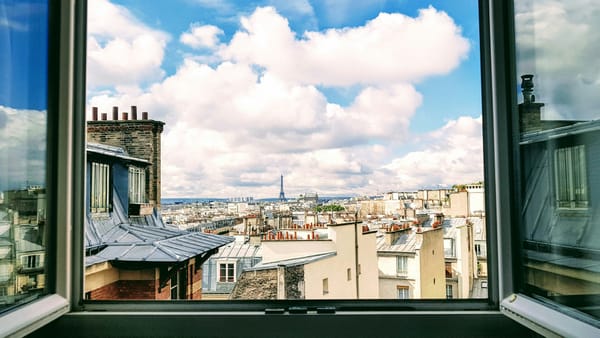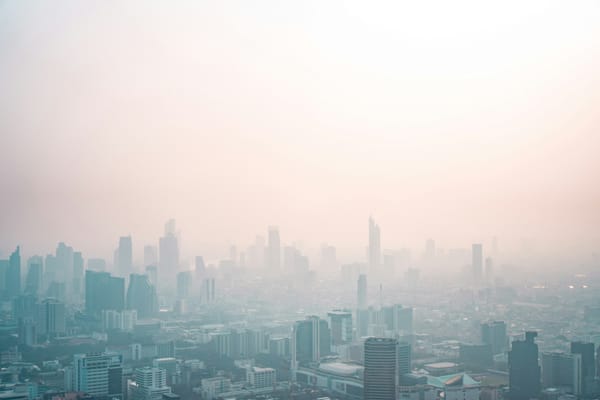How to prolong the life of your air purifier filters
Here is a trick that lets you use the filters of your air purifier longer.

In the first article of this series on air quality, we talked about how to measure and improve air quality in general. In the second article, I wrote about how I strategically air my home, based on the data that my air quality meter provides. In this article, I'll show you a handy trick that lets you use the filters of your air purifier for longer.
Different filters
Each air purifier is different, so this article might not work for all the devices out there.
A good air purifier comes with more than one filter. Usually, a prefilter, a carbon filter and a HEPA filter are used in unison to thoroughly clean the air of unwanted compounds.
Depending on the device and how often you use the air purifier, you have to change the filters a couple of times per year. Anything from 1-4 times (or even more) is possible. Assuming that the average replacement set of filters costs 50 dollars, and you have more than one device, this can get costly.
Personally, the health benefits are worth the cost for me, but it's nice to act a bit more resourceful and prolong the life of the filters when I can.
The prefilter
The prefilter is the first line of defense, and it filters the big compounds that get sucked into the air purifier. After a few days of filtering, you start to see hair and dust balls sticking to the prefilter. Then it's time to pull the hair out and vacuum the prefilter. After that, I rinse the prefilter with the showerhead and let it dry.
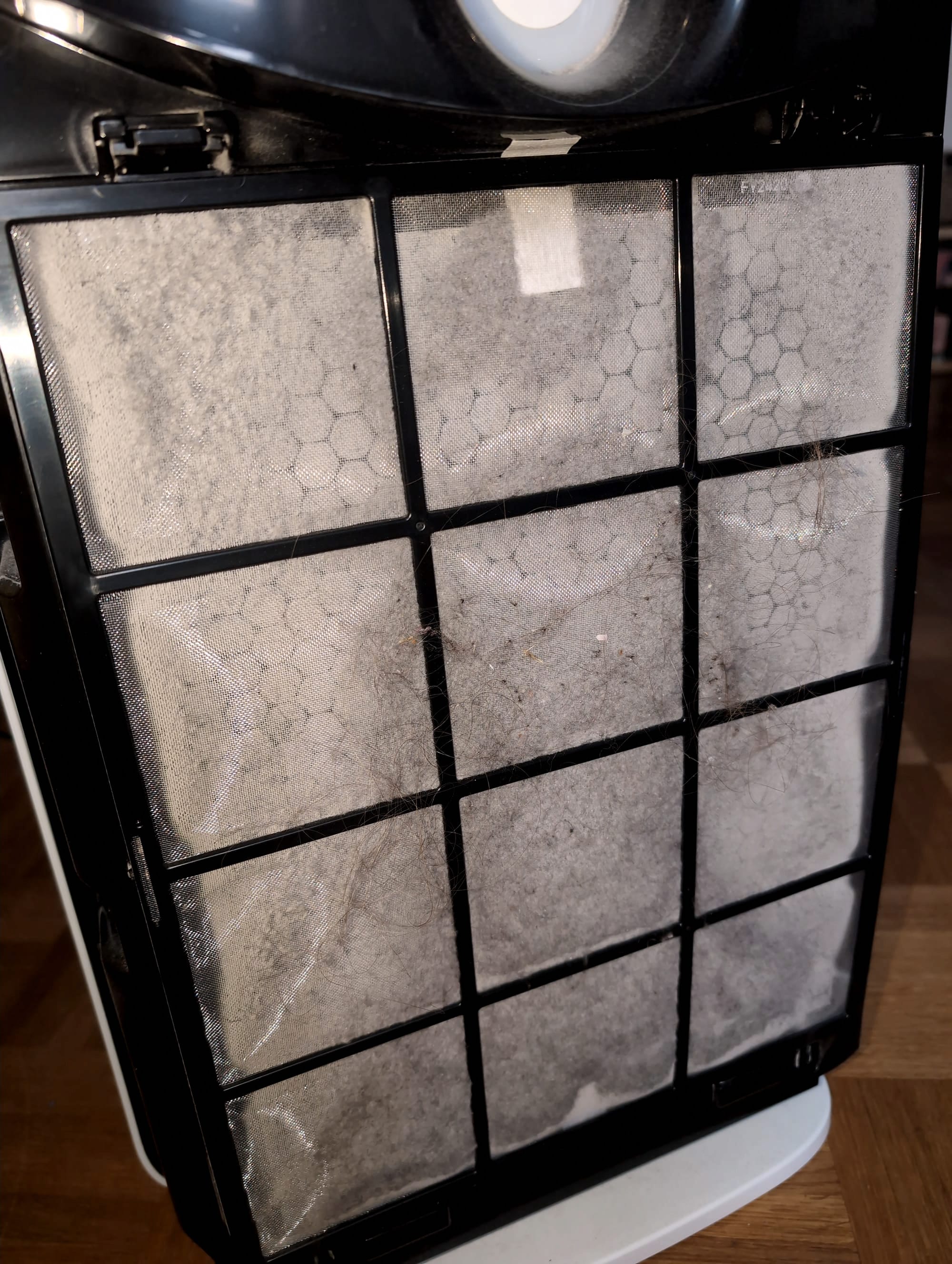
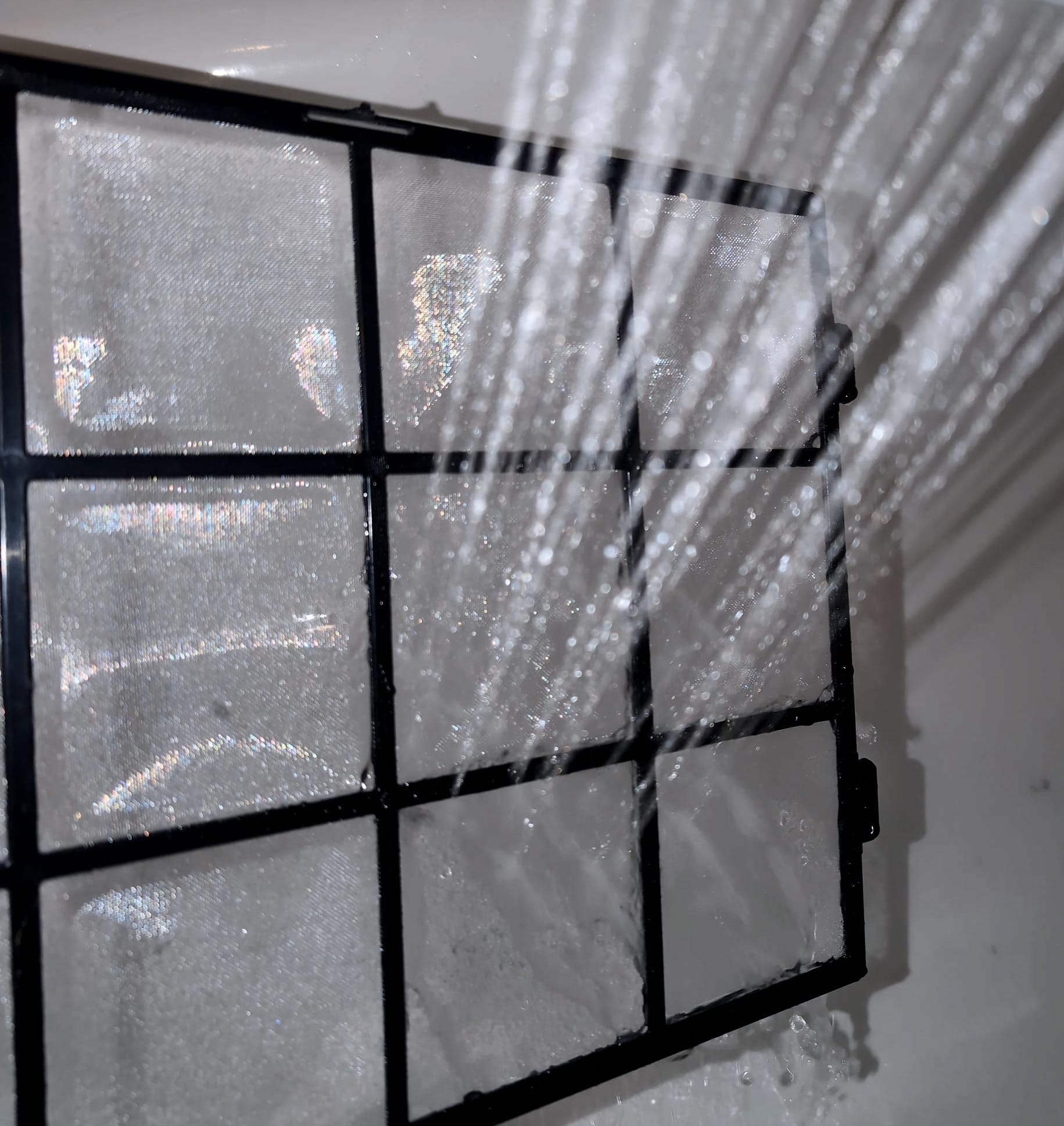
The carbon filter
The second line of defense is the carbon filter. This one collects more heavy dust particles. I don't clean it with water, but I vacuum it thoroughly, so the dustballs are removed from the carbon filter, and it's as good as new.
Granted, the carbon filter on the photo is extremely dirty. I let it filter longer than usual (a few weeks without cleaning it) to have it really show on the photo and emphasize my point. Usually, I clean it out more frequently, and it shouldn't look THAT dirty. On the other hand, it didn't seem to impair its filtering capabilities, since I couldn't detect worse performance with my air quality meter. Maybe it took a bit longer than usual, but I didn't really notice a difference.
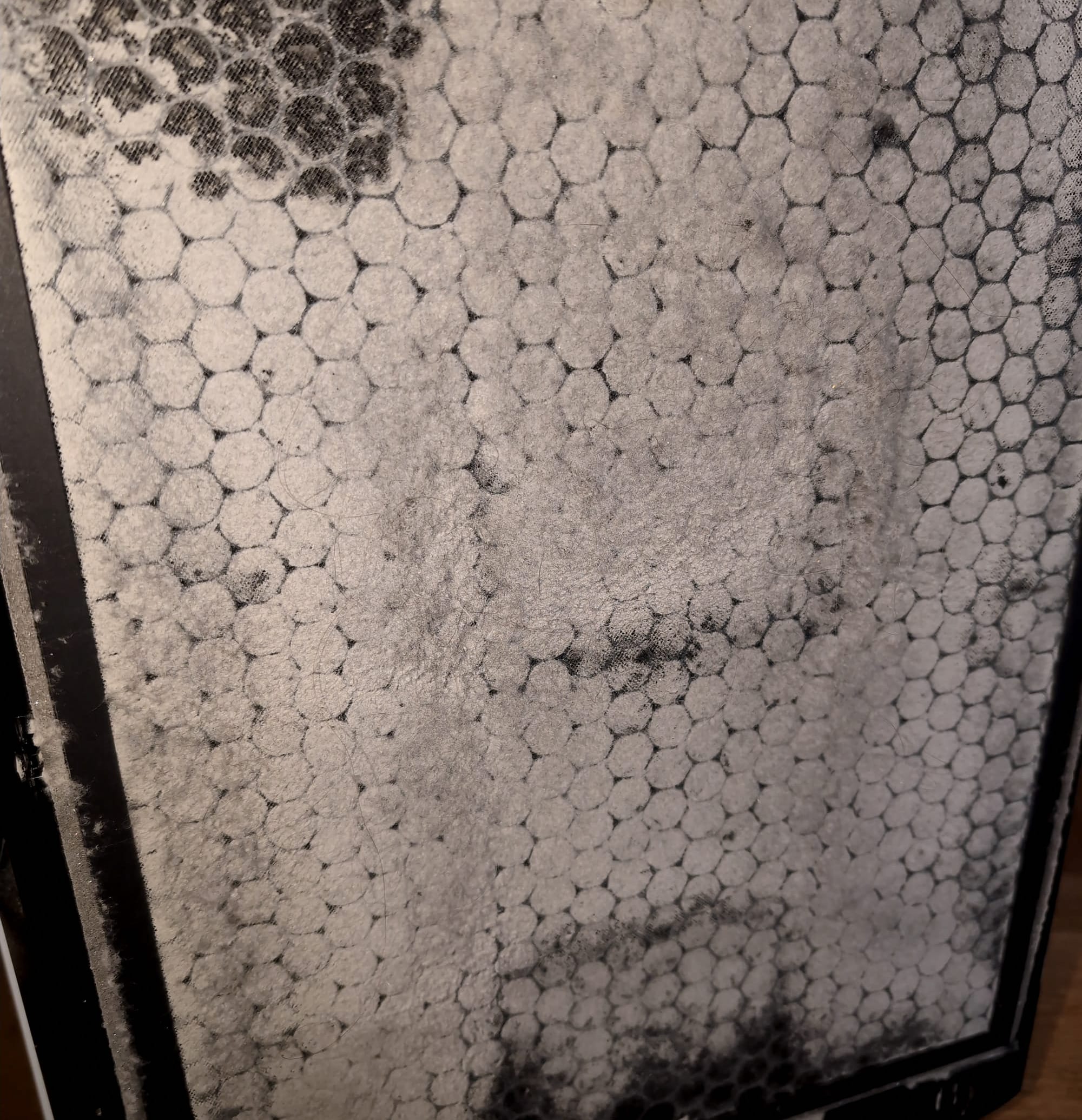
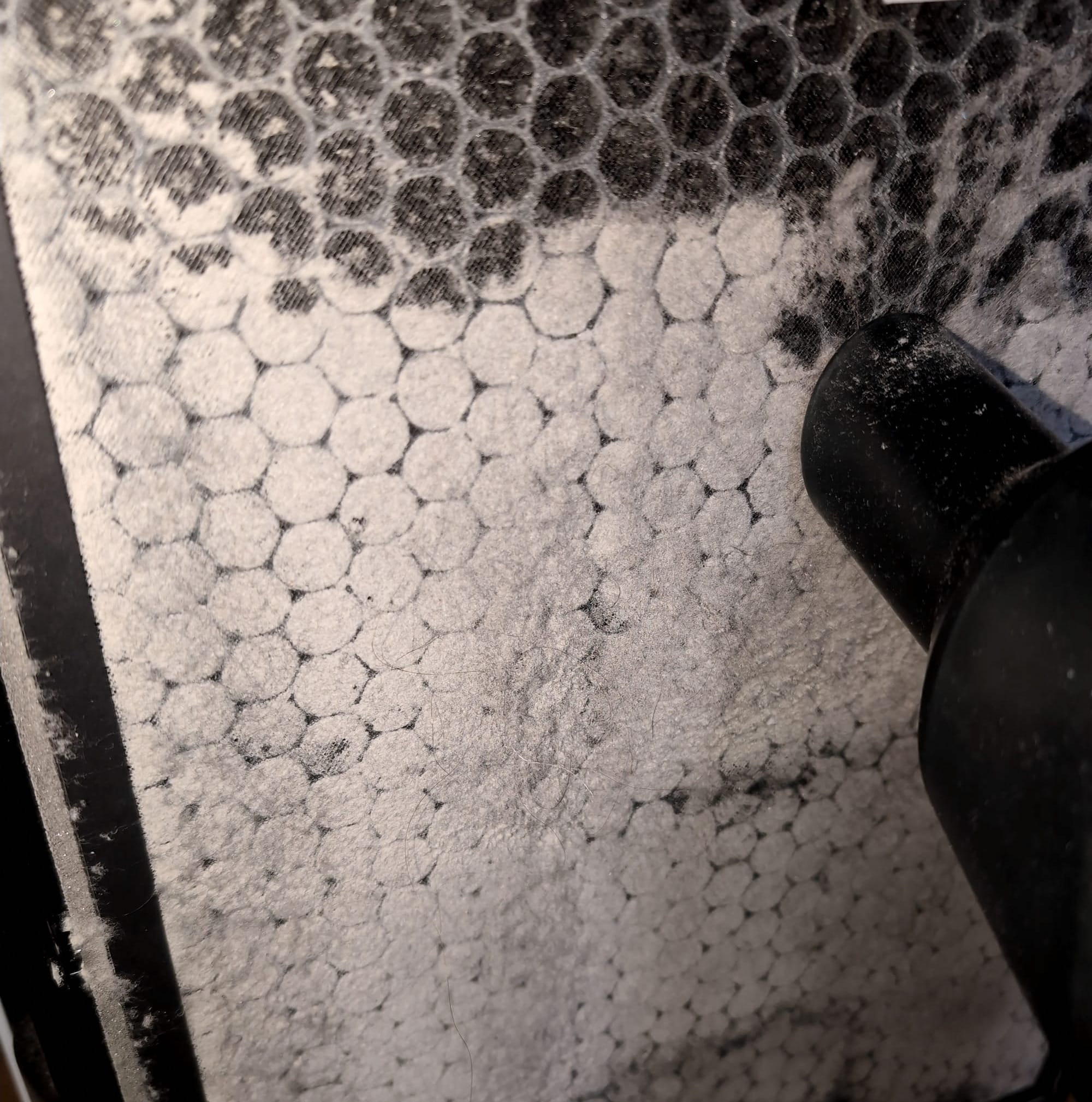
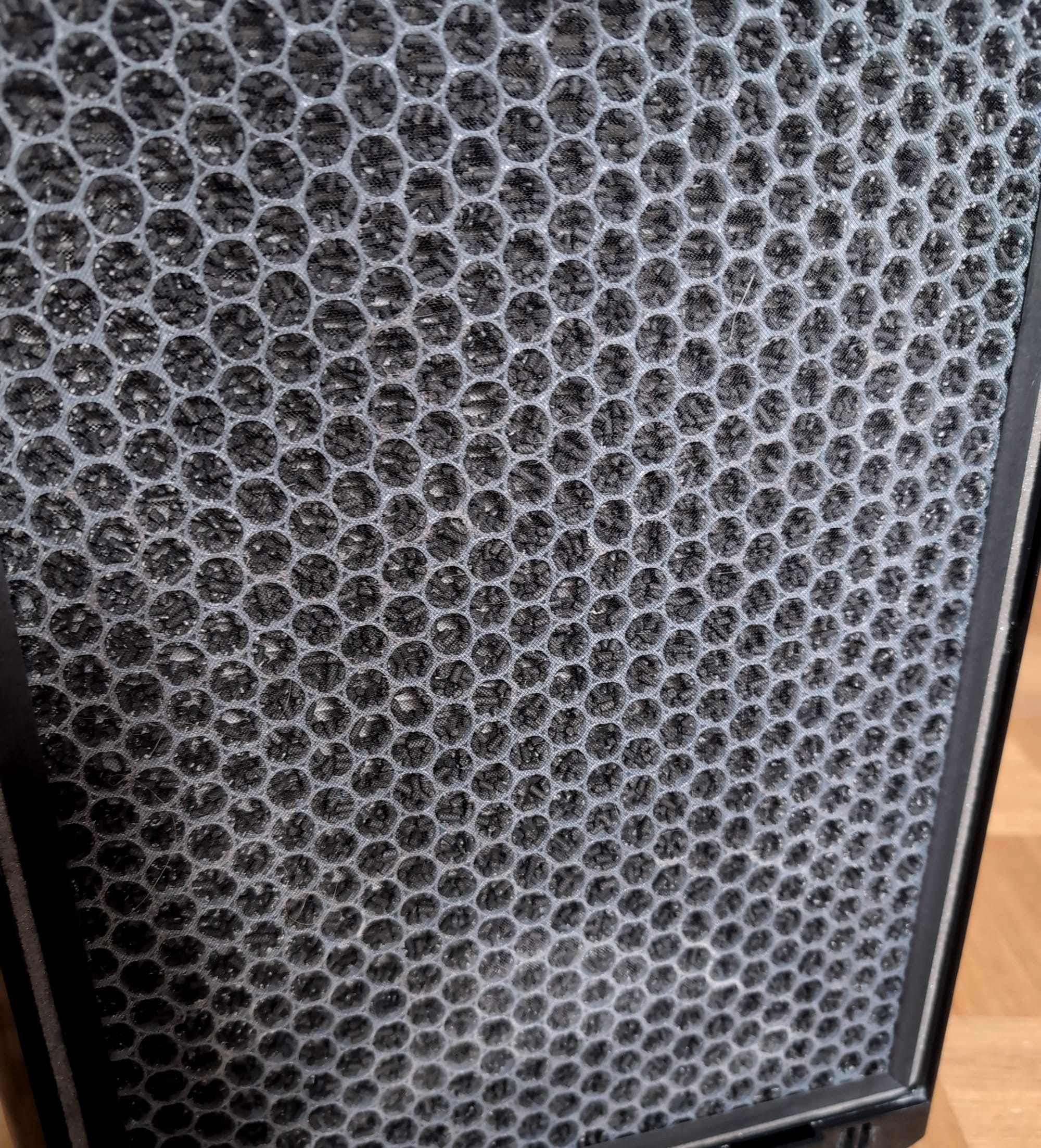
The HEPA filter
This is the last line of defense, and it filters out the really tiny particles. I don't clean this one out. It's usually long-lasting and works just fine.
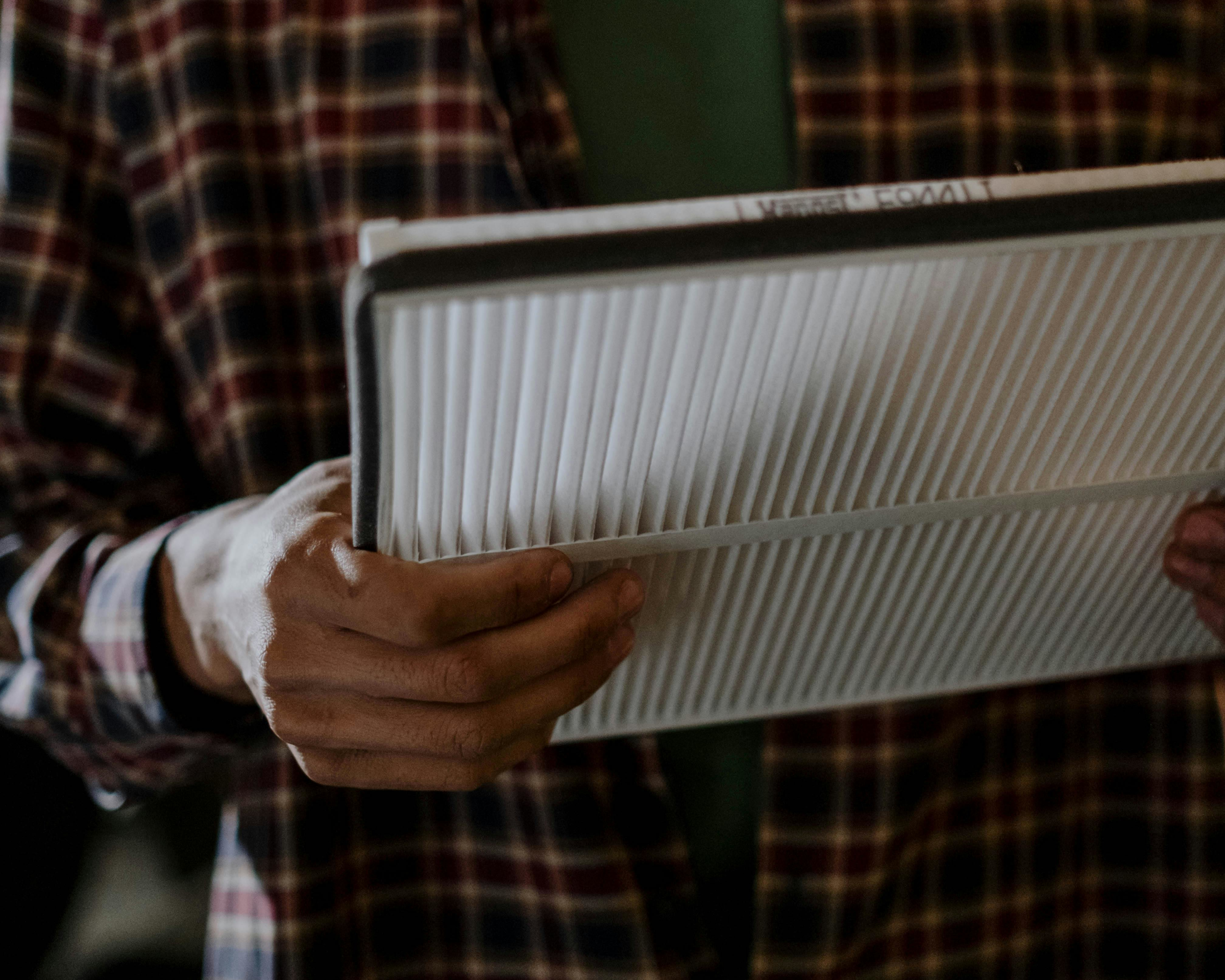
With this method, I'm able to use the filters almost twice as long as I normally would. This reduces the cost of new filters that I have to buy. I would like to see if and how companies could recycle parts of the filter and use that in the production of new filters to make the whole endeavor more sustainable.
Let's be honest, once the filters are worn out, they land in the trash and just add to the plastic waste problem we already have.
It is sad that I have to add to that problem in order to avoid the harmful consequences of another man-made problem, which is air pollution.
I hope you found this helpful. If you have suggestions for improvement or have other tactics that you want me to include, contact me, and I'll be happy to include them here. Thank you for reading.

